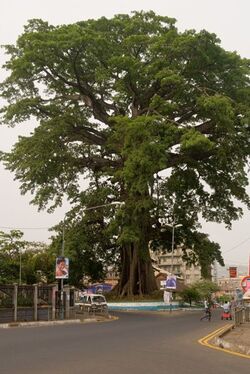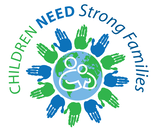 I posted about the Cotton Tree in Freetown falling in a recent storm on HCW's regular blog, but I can't get it out of my mind and how it connects to the overarching metaphor we're working with in The Root of it All. Anyone who is familiar with Sierra Leone at all knows the giant Cotton Tree that stood in the center of the capital city for more than four centuries. A symbol of peace and freedom, the legend is that newly freed slaves from the UK and the US stood beneath the tree to pray in gratitude for their freedom. The tree has been a place where Sierra Leoneans have continued to gather and pray. In Mozambique, as our film crew explored possible titles and guiding metaphors for the film, we were operating first with the idea of Kintsugi - the Japanese art of repairing broken pottery with silver or gold to make something transformed out of brokenness. We even found lots of mosaics we thought could serve as a similar visual while shooting b-roll footage in Maputo, but somehow it didn't quite fit. Toward the end of our trip, Sam shared a story about a piece he'd done about seeds, and I shared a story about a sermon I'd heard then Rev. Tom Berlin preach after the tragic death of a child in our congregation - about the importance of deep roots in strengthening a community so that when waves of crisis and tragedy come - as they will - the roots are deep and resilient. That's how we came to "The Root of it All" - family. Knowing we'd be shooting next in Sierra Leone in July, we made plans to visit the Cotton Tree. I can't believe that when we get there in July, we won't be able to do that. Sam and Mariana will never get to see that magnificent tree as it was. And I'm wondering what this loss has to tell us in light of the story of family and resilience that we're trying to tell. Many people don't know this, but the Freetown Cotton Tree is actually a Kapok tree. Kapok trees can grow up to 150 feet tall, and the emergent crown of the Kapok, unshielded by its diminutive neighbors, stands ready to catch any large gust of wind that might come along. And, with a shallow root system common among tropical rainforest trees, the Kapok faces the very real danger of toppling over during storms that occur frequently across the tree’s geographic range. That is indeed what happened to the beloved Cotton Tree. I'm not a gardener (far from), but the lesson I'm taking away is this: we need to focus on strengthening the roots of children's lives - their families. I know that when I water new trees in my yard, I'm focusing on getting water to the roots of the plant, not the leaves. If I water the roots, they will take care of the branches and the leaves. If we pour into families, find ways to strengthen and empower them - they will care well for their children. They'll set down deep roots so that they can be resilient against the storms that just come with life.
0 Comments
|
What You Cannot Do Alone, You Can greatly Influence, if you choose.In the spirit of our core values of Radical Faith, Radical Courage, and Radical Trust, in 2022, Helping Children Worldwide asked ourselves what more we could do to end the global family separation crisis. We have been sharing the experience of our partnership with the Child Reintegration Centre in Sierra Leone for years, and finding that alone had made a huge impact. The more we tell that story, the more people who show up to help. That is why we made a bold suggestion to our friends at First Fruit, that they underwrite a documentary on the story of transforming global orphan care to family permanency models. They agreed. Archives
February 2024
Categories |
Helping Children Worldwide is a 501 (c) 3 nonprofit organization | 703-793-9521 | [email protected]
©2017 - 2021 Helping Children Worldwide
All donations in the United States are tax-deductible in full or part. | Donor and Privacy Policy
©2017 - 2021 Helping Children Worldwide
All donations in the United States are tax-deductible in full or part. | Donor and Privacy Policy

 RSS Feed
RSS Feed





